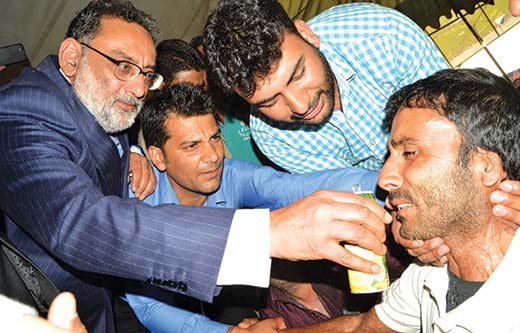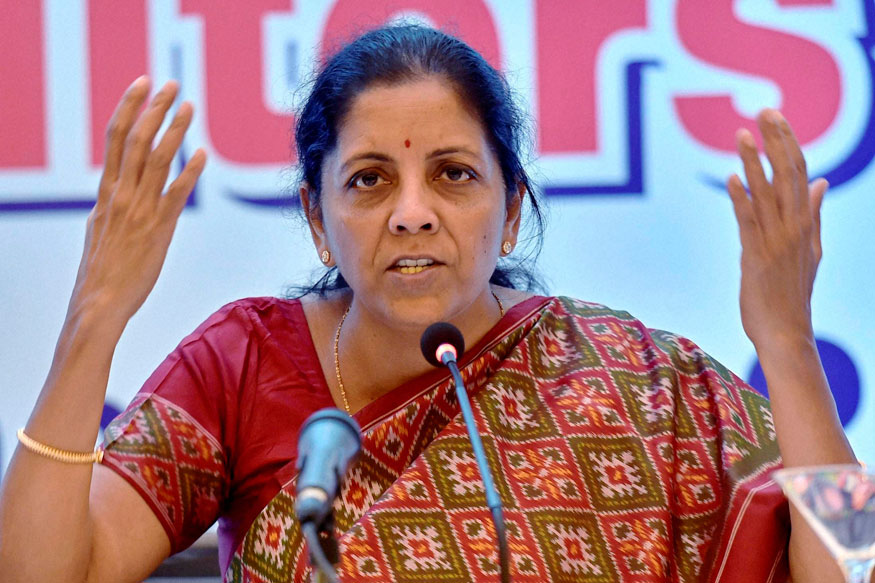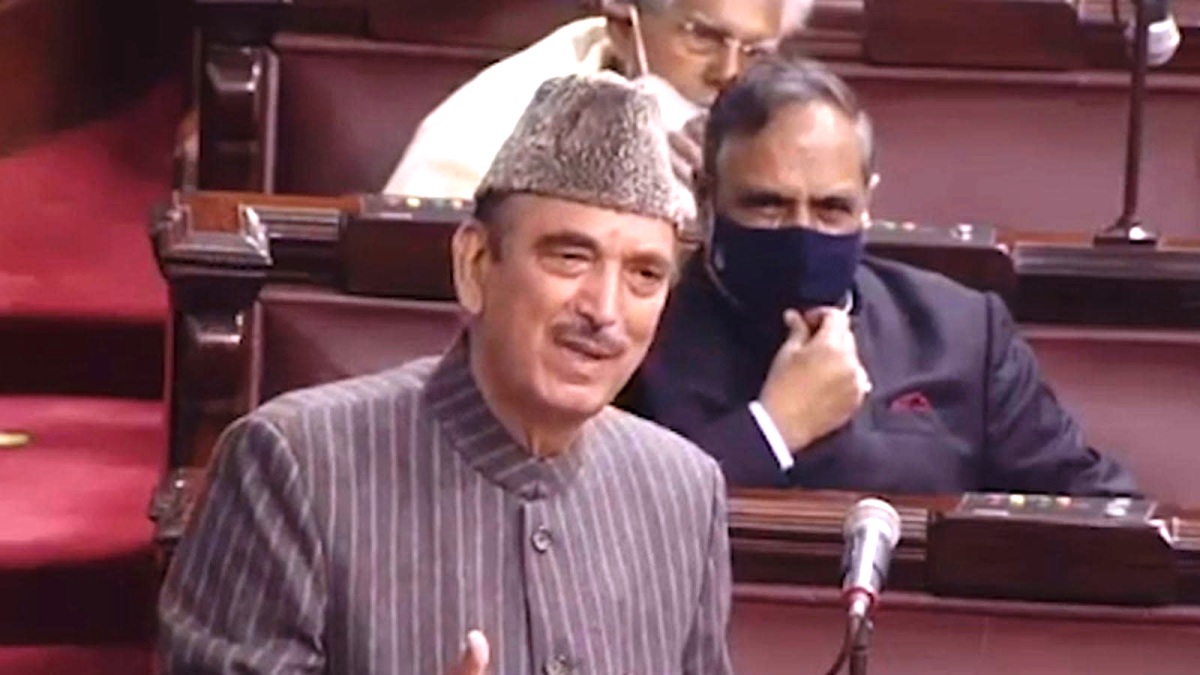J&K Government tabled the J&K Economic Survey 2017 on table of the House. The lead chapter is detailing the incentives that go to the manufacturing sector. Though the incentives continues as part of the twin packages by the centre and the state government, the lead chapter of the Survey is asking the readers to explore possibilities of moving beyond subsidies and think of other alternatives which is otherwise going to be reality in the GST era. Kashmir Life reproduces few select chapters from the survey in the larger interest of the society

The state of Jammu and Kashmir located far away from the market, and the major raw material source base, has historically remained isolated from the major industrial development action happening in the plains. The geographical isolation has restricted state’s industrial activity to a selected few sectors in which it either had impressive expertise or had raw material locally available. At one point of time, forests were the main wealth-making resources till the sector was nationalised and new conservation norms took over.
Historically, most of the manufacturing activity in the state has remained restricted to the state’s inherent capacities in agriculture and handicrafts. Both the areas remained, and partly still are, restricted to unorganised cottage sector. This has helped the non local corporate houses in respective sectors gradually takeover. The fall of various local dairy products and their takeover by the branded products from the plains and the takeover by Punjab machine made products of the heritage handicrafts sector triggered crises for the local unorganised sector.
In order to help local investors, and in certain cases, major business houses, to set up some manufacturing facilities in the state, the state government provided incentives to introduce industrialisation in J&K state. It started with the offer of developed land for setting up of enterprises, which was followed by concessional power. Since most of the industrial units were relying heavily on the raw material from the plains, the long haul from the railhead would make the production costlier . This necessitated the transport subsidy. The net power deficit encouraged a free alternative system to generate current.
With the passage of time, the policy makers and the industry continued cobbling many other relaxations that led to a variegated basket of industry incentives. At one point of time, state government was offering a set of as many as 14 different incentives to the industry. But the delay in sanctioning of the incentives and the disbursement process would not create the desired results. In certain cases, certain products coming from the plains would still be cheaper in comparison to the local produce simply because the local investors lacked the economies of scale. This made sustaining the incentive basket all the more important for the state government.
 It was in this backdrop that the central government announced a comprehensive industry specific package that offered a new set of concessions to the industry. The idea was to make states like North East, Himachal and Jammu & Kashmir attractive for new investments. The package was a major game-changer from the point of view of the state because it offered an additional window for the policy makers to see some possibility of getting best industrial practices, help exploit local raw material, add to the modest GSDP, and more importantly, help manage part of the unemployment problem.
It was in this backdrop that the central government announced a comprehensive industry specific package that offered a new set of concessions to the industry. The idea was to make states like North East, Himachal and Jammu & Kashmir attractive for new investments. The package was a major game-changer from the point of view of the state because it offered an additional window for the policy makers to see some possibility of getting best industrial practices, help exploit local raw material, add to the modest GSDP, and more importantly, help manage part of the unemployment problem.
The central package attracted major manufacturing houses to the state, mostly to Jammu, Samba and Kathua because of its proximity with the market, rail head and the raw material. The overall investment in the small, medium and large sectors was Rs 8070 crore by the end of March 2016. This also encouraged some of the local investors to set up plants in areas which were un-attractive for the major houses.
The Industry got a boost when the then Prime Minister Atal Behari Vajpayee on November 14, 2002 announced a ten year package aimed at helping state manage its massive unemployment and manage its infrastructure deficit. Apart from 100 percent excise duty refund for new ventures and substantial expansion of the existing ones (25% additional expansion); the package offered capital investment incentive of 15 percent within rupees three million; full reimbursement of insurance premium on capital investment; and three percent interest subsidy on capital investment. Besides, the investments were exempted from income tax for five years with concessions for further five years as well.
At one point of time, the central government revisited the incentives packages and made certain corrections. This triggered some judicial interventions as well. On March 27, 2008, an amended notification devoured part of the excise refund and permitted it to the level of value addition only. It reduced the refund off take from an average 10-14% to 0.5 to 1.5%.

Despite the amendment, it continued to be an attraction. By the end of 2015-16, Central Excise had refunded about an amount of Rs 5963.47 crore in J&K, mostly to the industrial sector.
State government has offered around Rs 700 crore of concession on VAT front alone.
In 2016, the state government for the first time, revisited the twin incentive packages and created a comprehensive new policy. Various shifts were affected in areas where incentives were flowing from two ends.
As J&K embraced the new tax system after the GST was introduced across the country, the industry started exhibiting tensions. The GST does not permit any takeaways as a system per se. The state government took the case to the GST Council where a new system got evolved on the sharing of the incentives.
GST is a sort of level player in the industry sector. Without concessions, the sector offers the same set of concessions and privileges to manufacturers and the consumers which is the hallmark of a common market. Setting up an industrial unit in Srinagar or Kanyakumari makes no big difference, given the basics of the GST system that works on linkages on production as well as consumption side.
For any state, extending incentives to industry may remain a temporary phase but cannot be continued in perpetuity because concessions are in clash with the GST structure. Since most of the manufacturing base that is listed for various concessions, their produce is supplied to the main market in the plains which essentially mains while the state government makes investments, its in-put credit goes to the consumers somewhere else. Almost ninety percent of the products manufactured in J&K move out, some to even off shore markets.
There is an urgent need to initiate a serious rethink on certain issues: What will be the output from the industry for the state government for continuing the concessions set-up? Will it produce for the local market without compromising its viability? Or will the concessions be linked to the quantum of local employment and jobs it will offer? Should the state government start creating a negative list for investment and prefer areas which are close to its market and raw material? These are some of the questions that need to be looked into for answers.
The State government on its part will have to justify the off take from the public exchequer for manufacturing things which are otherwise available to the consumer at a slightly lesser cost. In order to help the government explain its existing systems of takeaways from the system, the industry will have to come forward and link the concessions with certain key things that it will willingly offer in return.
 The scene on the jobs front has not been very impressive. When the central package was announced, the main focus was that, new investments will reduce the joblessness. But it did not help much because the industry said it is not getting the people with the requisite skill sets that it requires.
The scene on the jobs front has not been very impressive. When the central package was announced, the main focus was that, new investments will reduce the joblessness. But it did not help much because the industry said it is not getting the people with the requisite skill sets that it requires.
Though most of the ITIs and other training institutions are linked with the industry, it still is not offering a positive outcome. There are serious issues on the wages front as well. Besides, welfare issues also have certain huge questions marks both on the industry front and the systemic side.
This crisis has led to the amendments in the industrial policy permitting investors to get the skilled manpower from outside the state. Though the package is in play for more than one-and-a-half-decade, it has not still triggered the change, it was targeted at. That is the question that needs to be answered by all.
Now the issue is that if Rs 1 crore investment from public kitty, creates X number of jobs in the industry sector, is it more, less or equals the rational expectations. If it falls much below that, then whole policy may require a rethink. If public investment of the state in private sector does not help it manage part of the unemployment load, then planners will have to rediscover another strong reason to keep the concessions intact.
One possibility is to encourage the industry that secures its raw material from outside and supplies within the state. Another possibility is to add to the incentives to the units which have more local employment. Yet another possibility could be preventing certain goods into the state so that local manufacture retains the market without competition. Since the GST has given a level playing field to entire industry, apparently to the disadvantage of the smaller players like J&K, there is a possibility of improved investment in overall infrastructure by debit to the huge kitty that the two governments have been setting aside for industry, over the years. A strong probability is to identify the requirement of the state market and invite industry to help substitute imports.















